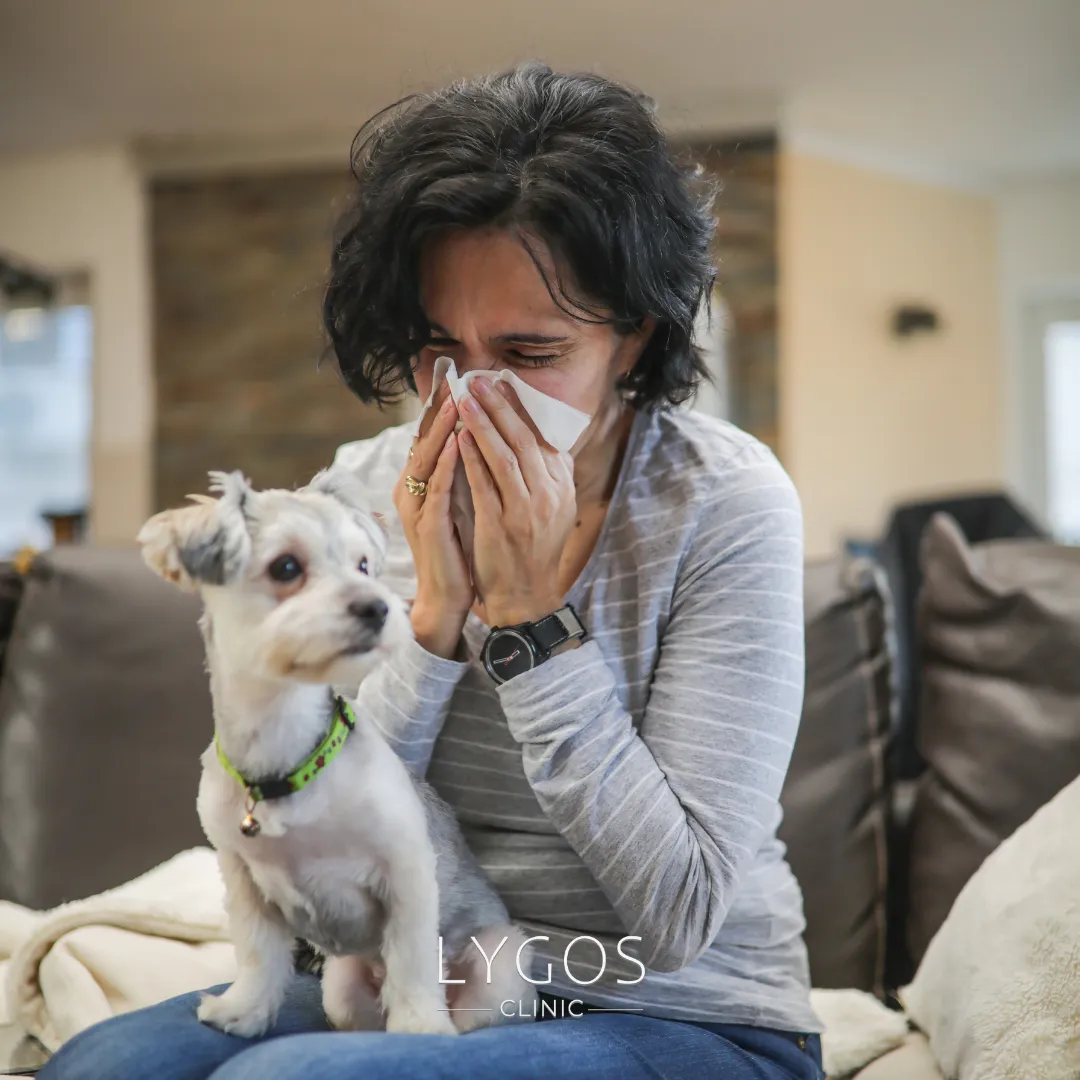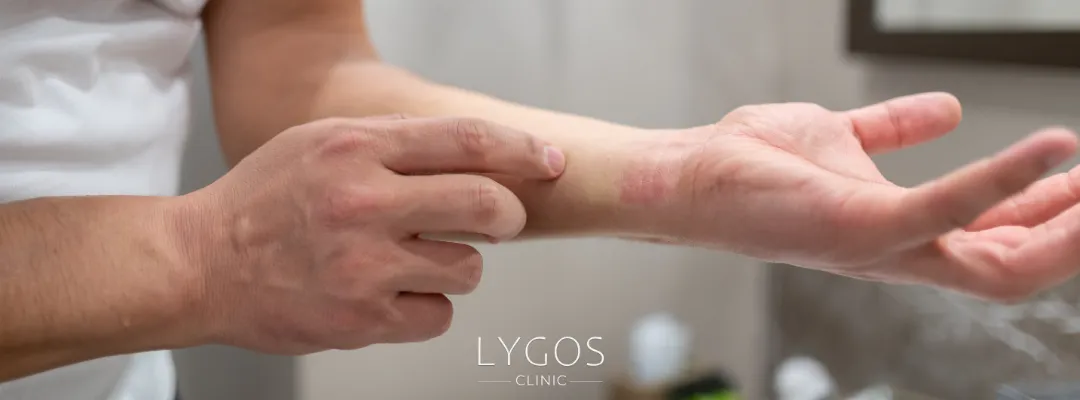Nosebleeds (Epistaxis) | Causes and Treatment | LYGOS 2025

Nosebleeds (Epistaxis): Causes, Treatment, and More
Nosebleeds, or epistaxis, are a common medical condition that can cause concern but are usually not serious. Understanding what triggers nosebleeds, the different types, and how to treat them effectively can help ease any anxiety associated with this condition. In this comprehensive blog post, we will discuss everything you need to know about nosebleeds (epistaxis), including causes, commonality, who is most likely to get them, and how to manage them effectively.
What is Nosebleeds (Epistaxis)?

A nosebleed, or epistaxis, refers to the bleeding that occurs from the inside of the nostrils or nasal cavity. It happens when one of the numerous blood vessels in the nasal passages breaks, causing bleeding. While they may seem alarming, nosebleeds are usually not a sign of a serious health condition and can often be managed at home. However, understanding the potential causes and the best practices for treatment can help prevent future episodes and ensure prompt, proper care when they do occur.
Nosebleeds are categorized into two types based on where they occur:
- Anterior nosebleeds: These occur in the front of the nose, usually from the blood vessels located in the septum (the area between the two nostrils). Anterior nosebleeds are the most common type; they are usually mild and simple to treat.
- Posterior nosebleeds: These occur deeper inside the nose, often involving larger blood vessels. Posterior nosebleeds tend to be more serious and may need medical attention to control the bleeding.
Nosebleed Causes

There are several factors that can lead to nosebleeds, with some being preventable and others linked to underlying health conditions. Common causes include:
- Dry air: Nosebleeds are often triggered by factors such as dry air: environments with low humidity or heating can dry the nasal passages, leading to cracks and bleeding. This is particularly common during the winter when heating systems are used.
- Allergic reactions: Sensitivities to dust, pollen, or pet dander can inflame the nasal passages, heightening the likelihood of bleeding.
- Frequent nose picking or vigorous blowing: Physically irritating the inside of the nose by picking or blowing too hard can damage the blood vessels, leading to a nosebleed.
- Infections: Conditions such as sinus infections, colds, or upper respiratory infections can irritate the nasal passages, raising the risk of bleeding.
- Medications: Some medications, including blood thinners, nasal sprays, and antihistamines, may raise the risk of nosebleeds by thinning the blood or drying out the nasal membranes.
- Structural Abnormalities: Conditions like a deviated septum or nasal polyps can interfere with airflow and drainage in the nose, raising the risk of bleeding.
- Underlying health conditions: Blood disorders, such as hemophilia or thrombocytopenia, can make it harder for the body to stop bleeding. In addition, conditions such as high blood pressure can make blood vessels more susceptible to rupturing.
How Common are Nosebleeds (Epistaxis)?

Nosebleeds are surprisingly common, affecting people of all ages. It’s estimated that approximately 60% of people will experience a nosebleed at some point in their lives. While most cases are not serious, certain demographics are more likely to suffer from frequent nosebleeds.
- Children: Nosebleeds tend to occur between the ages of 3 and 10 due to frequent nose picking, colds, or environmental factors like dry air.
- Older adults: Age-related changes in blood vessel integrity and the use of medications such as blood thinners contribute to the higher incidence of nosebleeds.
- Seasonality: Nosebleeds are more common in winter due to the dry, cold air that can dry out the nasal passages.
- Extreme climates: People who live in areas with extreme climate conditions, such as deserts or high altitudes, may also experience nosebleeds more frequently.
Who Gets Nosebleeds (Epistaxis)?
Although nosebleeds can occur in anyone, some individuals are at a higher risk due to certain factors or conditions. These include:
- Children: Young children are particularly prone to nosebleeds, especially during the winter months when the air is dry. They are also more likely to pick their noses or blow their noses forcefully, which can damage the blood vessels in the nasal cavity.
- Older adults: As people age, the blood vessels in the nose become more delicate, which increases the chances of rupture and nosebleeds. In addition, the use of medications such as blood thinners, which are common among older individuals, can increase the likelihood of nosebleeds.
- People with allergies: Individuals with allergies to dust, pollen, or pet dander often experience nasal inflammation, which can make the nasal membranes more susceptible to bleeding.
- People with certain medical conditions: Those with blood disorders, such as hemophilia or platelet dysfunction, may have difficulty clotting blood, increasing the risk of nosebleeds. People with high blood pressure or cardiovascular conditions may also be more prone to nosebleeds due to the strain on their blood vessels.
- Environmental factors: Those who live in areas with dry climates or who spend time in air-conditioned or heated spaces are more likely to suffer from nosebleeds due to the dry air.
Random Nose Bleed
It’s not uncommon for a person to experience a random or spontaneous nosebleed, especially if they have a history of occasional nosebleeds or live in a dry climate. Random nosebleeds can occur without any clear triggers, such as allergies or infection, and may happen out of the blue. For instance, a sudden change in temperature, like going from a warm room to cold outside air, can irritate the sensitive blood vessels in the nose.
Similarly, physical activities like exercise or heavy lifting can sometimes trigger a nosebleed due to the increased blood flow to the nasal area, which may strain the blood vessels. While these nosebleeds are usually harmless, repeated episodes may indicate an underlying issue, such as a nasal obstruction, a more severe allergy, or a medical condition that requires attention.
Managing a Nosebleed
The majority of nosebleeds can be treated at home using simple first-aid methods. Here’s how to manage a nosebleed effectively:
- 1.Stay calm: Panic can increase blood pressure, potentially making the bleeding worse. Breathe deeply and slowly to remain calm while experiencing a nosebleed.
- 2.Sit up and lean forward: This position helps reduce the blood pressure in the blood vessels of the nose, making it less likely for the blood to flow back into the throat, which could cause nausea or vomiting.
- 3.Pinch the nostrils together: Using your thumb and index finger, pinch your nostrils together and hold them for 5 to 10 minutes. This pressure helps the blood clot and stop the bleeding.
- 4.Use a cold compress: Apply a cold pack or cloth to your neck or around the nose to constrict blood vessels and help reduce the bleeding.
- 5.Avoid blowing your nose: Refrain from doing so for several hours after a nosebleed to help the blood vessels heal properly.
- 6.Consider using a saline spray: In dry conditions, a saline nasal spray can keep the nasal passages hydrated, lowering the chances of future nosebleeds.
For more severe or recurrent nosebleeds, medical attention may be required. A doctor may use techniques such as cauterization (burning the blood vessels to seal them), nasal packing, or other interventions to stop the bleeding.
Conclusion
Nosebleeds (epistaxis) are a common and usually harmless condition, but they can cause concern for many individuals. Understanding the causes, recognizing who is most at risk, and knowing how to treat them effectively can help reduce anxiety and manage the condition when it arises. However, if you suffer from frequent or severe nosebleeds, it’s crucial to consult a doctor for a thorough evaluation and appropriate treatment. By following these guidelines, you can feel more confident in managing a nosebleed and reducing the risk of future occurrences.
You can click on the link to follow our social media content.


